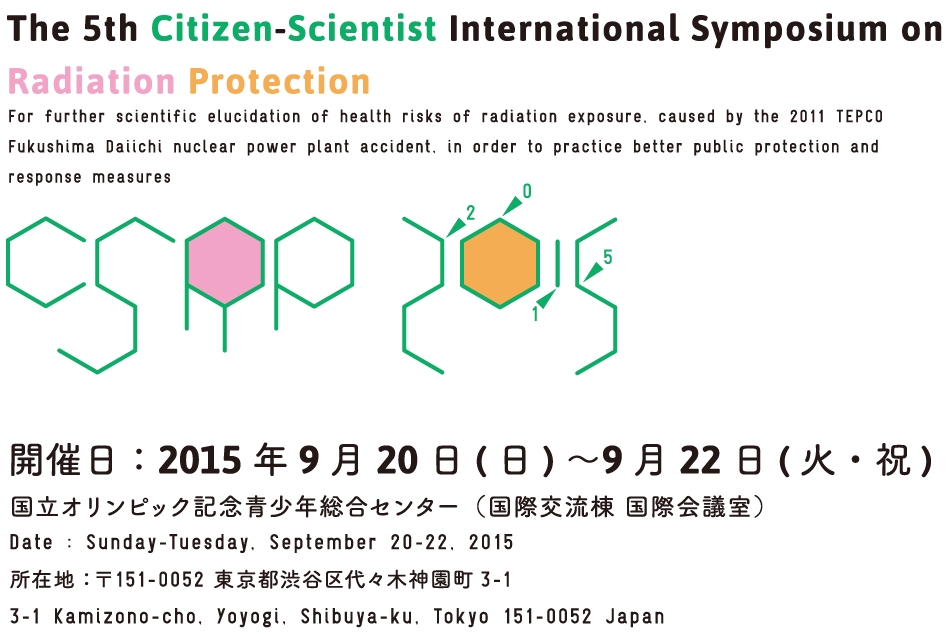From 18 to 22 September 2015, I did three lectures in Tokyo on the occasion of the 2015 Citizen-Scientist International Symposium on Radiation Protection:
“Dealing with low dose radiological risk: The challenge of striving for democratic justice and societal trust and peace in the absence of scientific evidence” at the Study Group on Radiation Health Effects After the Nuclear Accident, Sophia University, Tokyo, 18 September 2015;
“The Consolatory Practice of Leaving – On reflexivity as art activism in the age of populism, positivism and profitism”at the ‘Between Arts and Science’ session of the 2015 Citizen-Scientist International Symposium on Radiation Protection, Tokyo, 20 September 2015;
“The Right to be Responsible – Ethical reflections on risk assessment in post-nuclear accident situations” at the Ethics session of the 2015 Citizen-Scientist International Symposium on Radiation Protection, Tokyo, 22 September 2015.
The CSRP2015 organisers took a quote from our film ‘A Journey into the Land of the Fourth Dimension’ as motto for their ‘Between Arts and Science Session’:
今日、科学は、過去に類を見ない規模で、政治と経済の場における権力の戦略としての役目を果たしている。遺伝子操作が施された種をめぐる政策、高性能ド ローンによるテロ計画、砂糖や脂肪への依存を促す生化学的メカニズム、ハードウェアやソフトウェアに助長される金融投機およびゲーム理論による政治的・経 済的施策の支援は、その中でもほんの一握りの例に過ぎない。幸いにも、実のならない種、砂糖、脂肪、脂質、ドローンや金融投機は公共圏で具現化されるため に、社会的な批判に晒されることになるが、人間の行動および社会動態が政治や市場の恩恵を受けて数学モデル化されている事実は、いわば科学のおとり作戦と でも呼ぶべきかもしれない。このようなゲーム理論作戦は、完全に無益というわけではなく、それ自体が人類に直接的な害を与えはしないかもしれない。しか し、われわれが誰であり、何を信じ、何に希望を抱き、何を恐れるのかということが、このような作戦により感情から切り離され、時として皮肉に合理化されて いる状態というのは、重要人物グループ(権力者グループ?)が今日持つ世界観の痛ましさの一例かもしれない。完全な社会的組織化に合理的に取り組もうとす る妄執と対立するのは、複雑性とは単に、人々が自らその複雑性を理解しようとする権利を与えられるという意味合いがあるという洞察である。その洞察を護る ためにわれわれが必要としているのは、モデルでも公式でも数字でもなく、あの「4次元世界」により啓蒙される果敢さを携えた科学と経済と政治のみなのであ る。
※映画『A Journey into the Land of the Fourth Dimension』(コンセプト・監督:ガストン・メスケンス)メスケンス自身による背景説明より抜粋
Find more information on that session here
Background.
The Citizen-Scientist International Symposium on Radiation Protection (CSRP) is an initiative that was set up by an NGO network after the Fukushima nuclear accident. The initiative, now certificated as a non-profit organization, is (quote) “[…] politically, financially, ideologically and religiously independent […]” and “[…] created by concerned, free-thinking citizens who have been committed to keeping radiation damages on health and environment to minimum […].”
The CSRP recognises that judging on the necessary protection measures is complicated by the fact that ‘health effects of low-dose radiation exposure are not yet well understood’ but also claims that the people’s concerns and fears are above all triggered by their ‘mistrust in the information and radiation protection measures provided by the Japanese government’. As a reaction to that, CSRP wants to organise the public dialogue the authorities ‘fail to organse’: “[…] The purpose of CSRP is to gather the latest scientific findings from the world on health effects of ionizing radiation and share them with citizens. Furthermore, CSRP aims to provide citizen-scientists from within and outside of Japan with a table for discussion on health effects of ionizing radiation and on protective measures, contributing at the same time to the establishment of an extensive international network for citizens’ radiation protection. […]” (http://csrp.jp/about_us)
CSRP2015 was the fifth conference in a row. Day 1 focused on ‘diverse intellectual interactions between science and art’, day 2 explored ‘epidemiology as a science’ and provided ‘a general overview of radiation protection measures based on the latest biological findings’. Finally, day 3 dealt with societal aspects with the aim to discuss ‘what language, law and ethics are necessary in order to put such measures into practice’.


